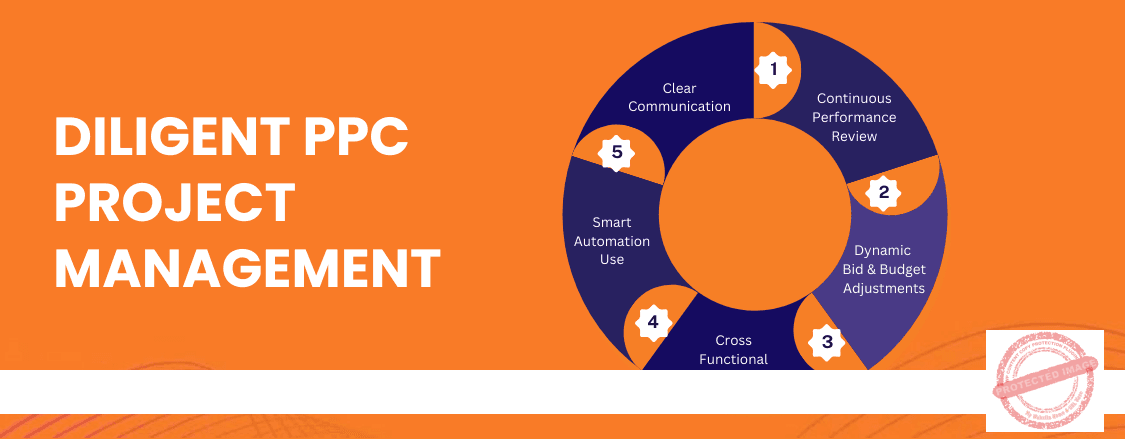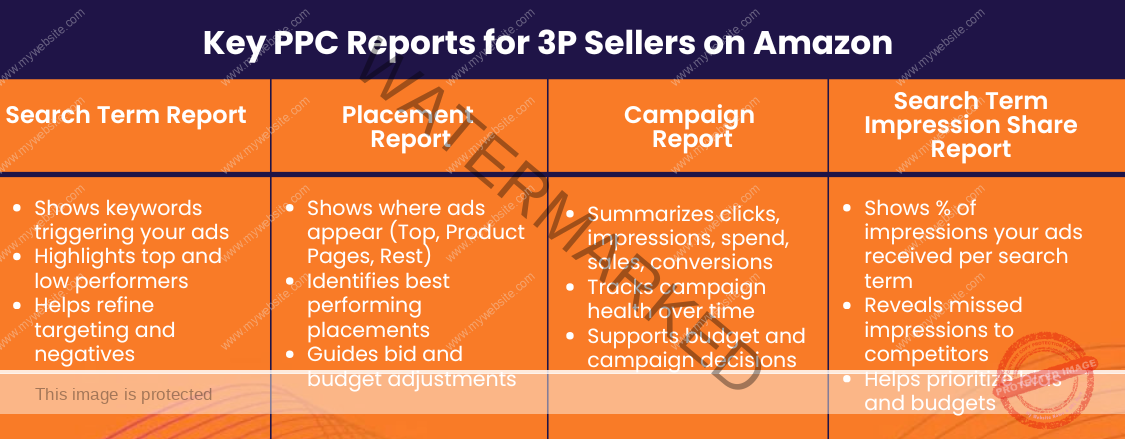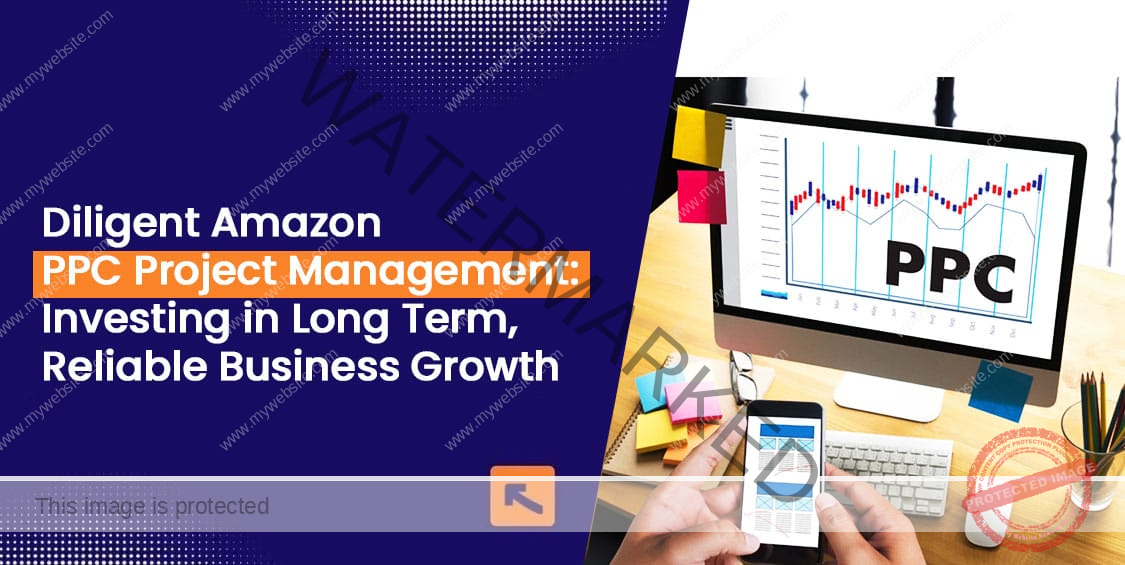Amazon PPC drives real sales and revenue for established brands and 3P sellers alike. Yet many fail to use its full potential because they treat PPC as a “set and forget” project or chase short-term goals without a clear strategy. The result? Wasted budgets, missed opportunities, and stalled growth.
For 3P sellers managing multiple ASINs or small teams, strategic Amazon PPC management is essential for sustainable success. It requires building reliable systems and regularly analyzing data to adapt campaigns to the fast-changing Amazon marketplace.
At AMZDudes, we design and manage PPC strategies that deliver consistent growth, improved cost-efficiency, and protect brand health. In this article, we share tactical insights on why investing in PPC is key to long-term success on Amazon.
What Is Diligent PPC Project Management for Amazon Sellers?
Diligent PPC project management means managing Amazon advertising with focused attention, discipline, and continuous improvement. It goes beyond launching campaigns and occasionally checking results. Instead, it’s about treating PPC like an ongoing project that needs constant monitoring, refinement, and alignment with broader business goals.

For 3P sellers, PPC project management involves:
- Regularly reviewing campaign performance metrics to identify high-value keywords and underperformers
- Adjusting bids and budgets dynamically based on real-time data and trends
- Coordinating PPC efforts with SEO, product launches, and inventory planning
- Leveraging automation tools carefully to increase efficiency without losing control
- Maintaining clear and consistent communication between teams or agencies handling ads, product listings, and overall operations.
This approach helps sellers avoid common setbacks such as overspending on low-converting terms, missing emerging opportunities, or running ineffective campaigns.
Why Focused PPC Management Impacts Your Business Growth
PPC affects many parts of your business beyond immediate sales. Here’s how focused Amazon PPC campaign management impacts key performance areas:
1. Improving Advertising Efficiency and ROI
Without careful oversight, Amazon PPC management costs can rise due to bids on irrelevant search terms or poorly targeted campaigns. Diligent PPC experts continuously optimize campaigns by:
- Pausing or lowering bids on underperforming keywords
- Increasing investment in high-converting, profitable keywords
- Testing new search terms and refining negative keyword lists
This ensures every dollar spent drives meaningful sales, improving your Advertising Cost of Sales (ACoS) and overall profitability.
2. Driving Sustainable Organic Growth
Well-managed PPC campaigns generate sales velocity, which signals to Amazon’s algorithm that your product is in demand. This increased sales activity can improve your organic search rankings. By aligning PPC targets with your top keywords, you create a reinforcing cycle where paid ads boost visibility and sales, which eventually help your product maintain higher search rank, organically. Over time, this reduces reliance on ads while maintaining steady organic growth.
3. Enhancing Brand Visibility and Market Share
Targeted ad campaigns place your products in front of the right customers, increasing overall visibility in competitive categories. With diligent Amazon PPC advertising management, you can identify keyword gaps and opportunities that competitors overlook. By focusing your ads on these gaps, your brand gains a competitive edge, attracts more buyers, and grows market share—all while avoiding wasted spend on overly competitive or irrelevant keywords.
4. Protecting Against Budget Waste and Inefficient Spend
Regular data analysis highlights wasteful spend patterns. Sellers who neglect regular PPC management on Amazon risk losing budget on broad, irrelevant terms or automatic campaigns that fail to convert. An ongoing review process helps catch these leaks early and reallocate funds where they matter.
How Data Drives Smarter Amazon PPC Decisions
Amazon provides several key reports, including Search Term, Placement Report, Campaign Report, and Search Term Impression Share (SIS), that empower 3P sellers to manage and optimize their PPC campaigns effectively. Understanding the role of relevant reports and knowing when and how to use them can significantly improve your advertising performance.

Search Term Report
- What it shows:
- Keywords and search phrases that triggered your ads
- Highlights of top-performing and underperforming terms
- Opportunities to refine targeting and update negative keywords
- How to leverage it:
Identify keywords driving sales and remove those wasting budget. Add high-converting search terms to manual campaigns with exact or phrase match types, and exclude irrelevant terms through negative keywords. - When to use:
Review this report weekly or after launching new campaigns to maintain effective targeting and improve campaign efficiency.
Placement Report
- What it shows:
- Where your Sponsored ads appear: Top of Search, Product Pages, or Rest of Search
- Performance metrics by placement to identify where ads convert best
- How to leverage it:
Focus your bids on placements that deliver strong ROI. Reduce or pause bids in low-performing placements to optimize spend. - When to use:
Check this report monthly or after major sales events to adjust bids according to peak traffic periods and promotional activity.
Campaign Report
- What it shows:
- Aggregated data on clicks, impressions, spend, sales, and conversions per campaign
- Overall campaign health and performance trends over time
- How to leverage it:
Use insights to spot seasonal trends or the impact of optimizations. Reallocate budgets toward high-performing campaigns and pause underperforming ones. - When to use:
Monitor this report biweekly or monthly to support long-term strategy and budget planning.
Search Term Impression Share Report
- What it shows:
- Percentage of available impressions your ads received for each search term
- Identification of where competitors are capturing more impressions
- How to leverage it:
Spot keywords with low impression share but high relevance. Increase bids or budgets on these terms to regain visibility and capture missed sales. - When to use:
Use this report monthly or ahead of product launches and promotions to prioritize competitive keywords.
Integrating PPC with Other Business Functions for Better Results
Managing ad campaigns with content, inventory and pricing helps reach your true PPC growth potential. Your PPC strategy should align closely with:
- SEO and Content: Optimize product titles, descriptions, and backend keywords based on PPC-friendly search terms.
- Inventory Management: Scale ad spend in sync with available stock to avoid running out of inventory or excess.
- Pricing Strategy: Adjust bids in response to price changes to stay competitive without eroding margins.
- Launch and Promotions: Amplify product launches and deals with targeted PPC bursts for faster momentum.
By aligning PPC with content, inventory, pricing and launch strategy, sellers create a holistic system that ensures better visibility, maximizes sales potential, and supports sustainable growth.
By aligning Amazon ads with listing content, inventory availability, and pricing strategy, sellers ensure every part of their Amazon operation works together to increase visibility, improve conversions, and drive long-term growth.
Key Tactics for Effective Amazon PPC Project Management
To manage Amazon PPC campaigns successfully, 3P sellers need a clear, disciplined approach. These key tactics focus on setting measurable goals, optimizing targeting, and ensuring ongoing collaboration. Following them helps you maximize ad efficiency and drive consistent growth.

1. Establish Clear KPIs and Performance Goals
Set specific targets like minimum ACoS, TACoS threshold, or ROAS value. Track these regularly to guide optimizations and measure success.
2. Segment Campaigns by Product and Funnel Stage
Use separate campaigns for branded, competitor, and generic keywords. Adjust bids based on the customer journey phase and conversion rates.
3. Regularly Review Search Term Reports
Identify and pause low-performing keywords while adding new high-potential terms to manual campaigns to keep ads targeted and efficient.
4. Use Negative Keywords Strategically
Update negative keyword lists regularly to block irrelevant or low-intent searches, reducing wasted spend and improving ROI.
5. Leverage Dayparting and Placement Adjustments
Shift budgets to top-performing times and placements like Top of Search to maximize ad effectiveness and returns.
6. Automate Repetitive Tasks with Caution
Employ rule-based automation for bid adjustments or budget caps but review changes regularly to avoid unintended outcomes.
7. Collaborate Across Teams or Agencies
Maintain open communication with SEO, inventory, and sales teams to keep PPC aligned with broader business changes.
Common Mistakes and How to Avoid Them
- Ignoring Data: Skipping regular reviews leads to outdated campaigns draining budget.
- Overbidding on Broad Keywords: Wasting spend on low-conversion traffic.
- Not Aligning PPC with Inventory: Running aggressive ads without stock causes poor customer experience.
- Neglecting Negative Keywords: Letting irrelevant searches consume budget.
- Relying Fully on Automation: Without human oversight, automation can misallocate spend.
Why AMZDudes Is The Reliable Partner for PPC Growth
AMZDudes specializes in Amazon PPC management tailored for 3P sellers and established brands. Our team offers:
- Deep data analysis and campaign tuning for sustained profitability.
- Integration of PPC with SEO, inventory, and pricing strategies.
- 24/7 accessibility to react quickly to marketplace changes.
- Transparent reporting with actionable insights.
Our approach balances automation and expert oversight to maximize every advertising dollar’s impact.
Checklist for Amazon PPC Project Management
- Define clear PPC goals aligned with sales and profit targets.
- Review campaigns weekly for performance trends and waste.
- Update negative keywords based on search term insights.
- Align PPC budgets with inventory and promotional calendars.
- Use automation tools with regular manual checks.
- Coordinate PPC strategy with SEO and pricing teams.
- Test new keywords and placements regularly.
- Keep clear documentation of changes and results.
Final Takeaway
For 3P sellers and established brands, Amazon PPC is not just an advertising tool but a critical driver of long-term business growth. Diligent Amazon PPC (pay-per-click) management turns a campaign from a cost center into an actual growth in PPC by improving efficiency, scaling visibility, and protecting budgets.
AMZDudes, your trusted Amazon PPC management experts, are here to help you invest wisely in PPC. With expert strategies, continuous optimization, and seamless integration across your brand’s operations, we ensure your PPC campaigns deliver lasting results.
Partner with us to access your full Amazon sales potential with our leading Amazon services including inventory management, listing optimization, advertising, and full-service account management.
Book a FREE consultation today!




